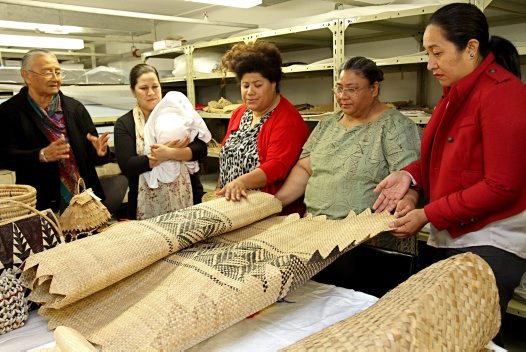Calling on Tongan Traditions: Handicrafts
Lady Tunakaimanu Feilakepa is renowned and greatly respected for her traditional cultural knowledge in Tonga and across the Pacific. Here she shares her knowledge on a variety of pandanus handicrafts.
I looked at the handicrafts in Miss Muriel Snell’s collection and divided them into two categories. The first category is those made from the pandanus plant and the mid rib of the coconut leaflet tu’aniu. The second category are those crafts made from only pandanus and are white and black in detail, typical of the Ha'apai area. I noticed a few baskets that were also made of Pandanus and tapa.
Category One
Those that were made with pandanus and tu’anui are structurally stronger. Amongst this category there are laundry baskets, paper baskets, shopping baskets, table mats/centre pieces, fans, trays, purses, and jewellery boxes. These are likely to have been made by village women or final grade students of Miss Snell.

© Australian Museum
Category Two
These were baskets of all shapes but mostly square and predominantly decorated with black pandanus and designs which are of Ha’apai origins. Only three of those baskets had tapa as decorations. These are likely to have been made on Tongatapu.There were also fans that were woven with pandanus only and I am in no doubt that they were made by students. Others of the same were crocheted purses using raffia which is an imported synthetic material.
I also came across two kie kie which is a girdle/waist adornment worn by the people of Tonga to show respect. These were most certainly made by students. Additionally we came across a kafa in the collection. This is made from coconut senit and plaited to tie waist mats around a person’s waist. Other clothing included two cotton dresses. Today the creation of these dresses is still a requirement for final year girls at school today. Girls must learn both Tongan and European techniques.

